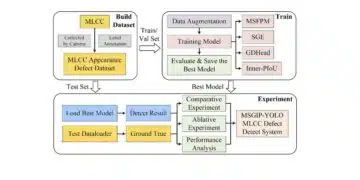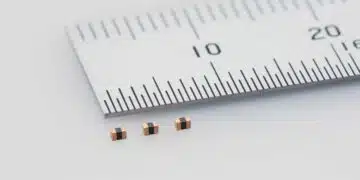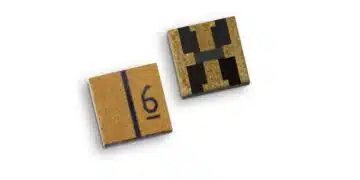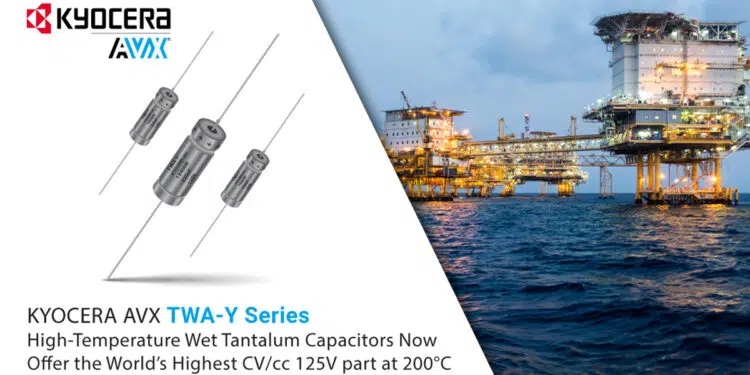The new KYOCERA AVX TWA-Y series of high-temperature wet tantalum capacitors now offer the world’s highest CV/cc at 200°C at 125V.
KYOCERA AVX, a leading global manufacturer of advanced electronic components engineered to accelerate technological innovation and build a better future, expanded its TWA-Y Series high-temperature, COTS-Plus wet electrolytic tantalum capacitors with the addition of a new 470µF/125V code proven to 200°C life testing procedures.
Currently available in a DLA T4-size case, the new 470µF TWA-Y Series capacitor offers the world’s highest CV/cc at 200°C and 125V and is designed to withstand continuous operation at 200°C for up to 2,000 hours with applicable derating. It also features a leaded, cylindrical, and hermetically sealed construction field-proven to ruggedly withstand shock and vibration and is an ideal drop-in replacement for existing M39006-style wet tantalum capacitors used for input and output filtering and energy storage and discharge in high-temperature industrial and downhole oil-drilling applications.
Unlike conventional wet electrolytic tantalum capacitors, KYOCERA AVX’s TWA-Y Series capacitors employ a unique cathode system that enables the highest CV/cc performance available on the market at 200°C at 125V in standard DLA case sizes spanning T1–T4. Featuring a hermetically sealed, welded tantalum can and header assembly and an optional insulation sleeve, TWA-Y Series capacitors ruggedly withstand harsh mechanical shock and high-frequency vibration per MIL-PRF-39006 and MIL-STD-202 (method 204, test condition “D” and method 213, test condition “I”) and exhibit stable electrical parameters over the full range of operating temperatures, extending from -55°C to +200°C.
“KYOCERA AVX is proud to offer the new 470µF/125V TWA-Y Series wet tantalum capacitors, which provide the world’s highest capacitance and voltage value (CV/cc) at 200°C,” said Allen Mayar, product marketing manager at KYOCERA AVX. “Our TWA-Y Series capacitors are produced and qualified at our highly accredited facility in Lanskroun, Czech Republic, and deliver the high-reliability, long-lifetime performance crucial to satisfying even the most demanding requirements of harsh-environment industrial and downhole oil applications.”
TWA-Y Series high-temperature, COTS-Plus wet electrolytic tantalum capacitors are currently available in four case sizes (DLA T1–T4) with capacitance values extending from 10–4,700µF (±10% or ±20% tolerance) and rated voltages spanning 15–125V. They are supplied with either SnPb 60/40 or lead-free-compatible and RoHS-compliant matte tin terminations in a tray pack, and current lead-time for the series is 10–14 weeks.
































